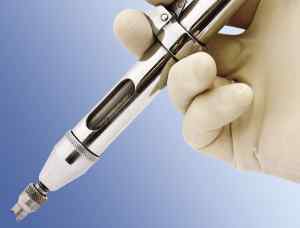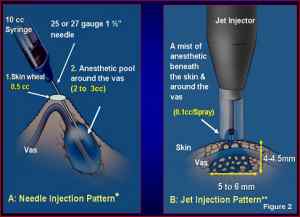In order to make vasectomy patients happier, the no needle technique was invented. It significantly reduces the fear and vasovagal reaction (fainting) during vasectomy.
Conventional needle anesthesia in no-scalpel vasectomy involves the use of a 27 gauge needle to raise a wheal at the skin of scrotum; it is then advanced its full length along the vas on each side where further anesthetic solution is deposited. One could feel a small poke and a bit of a squeezing pain during injection. However, most men do not like needles of any size … especially there!

MadaJet® was invented to replace needle injection. Wilson in 2001 initially described no-needle jet injection as a new anesthetic technique. Weiss and Li refined the jet injection technique for vasectomy. (J Urol 2005; 173:1677-1680). It is a spray applicator that delivers a fine stream of anesthetic at a pressure great enough to penetrate the skin and envelop the vas tube beneath the skin, attaining a close to 100% efficacy rate with no need for supplemental anesthetic.







